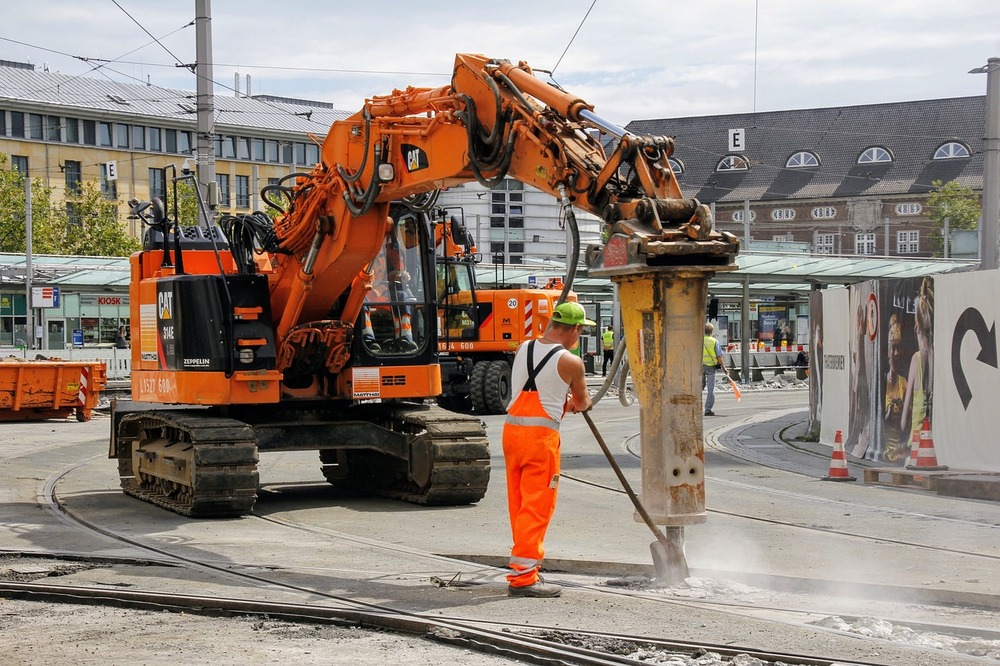It might seem daunting, time consuming & prohibitive for smaller practices, to implement BIM. Not with Driving Vision!
_This article is part of a blog series on Health and Safety issues on construction sites. Designers, architects, engineers, and contractors contribute to maintaining the site's health and safety regulation standards.
Construction sites present many health and safety issues, like injuries, accidents, and health problems.
In this article, we review the major construction safety rules you should follow to keep your staff and visitors safe:
Anybody entering a construction site must wear adequate PPE. This will minimize vulnerability to many health and safety risks on your construction site. PPEs include goggles, hard hats, gloves, earplugs, boots, and high-visibility vests.
It is critical to put health and safety signs to alert your staff or visitors about potential risks where required. You must advertise the risks adequately, either just posting safety tips, or when an area is dangerous and should only be entered by authorized personnel. The signs might indicate if it is prohibited, mandatory, a warning, a safety issue, or fire protection.
You must introduce your staff and visitors, before being on-site, to the potential health and safety risks they may be exposed to. It should be done by a safety, permanent specialist available on-site. This allows you to welcome new laborers or visitors, coach, train, and familiarize them with risks they may encounter, or health instructions they must follow when on site.
All team members must elevate their safety level by receiving real-time data, having access to standardized procedures, and proper information across all their working sites.
At all times, you must keep your sites free of debris, dust, loose materials or types of equipment, and dormant water.
Clean your sites daily and keep them hurdle-free to prevent trips. To achieve this, you want to remove all your tools lying on the ground.
We also recommend that you keep the lights on and all machinery unplugged. This will help you to keep your tools in good working condition, to prevent your staff from being injured, and allow them to maintain smooth circulation around the sites.
Using the wrong tools or equipment for a specific task may create accidents. To be safe and do the job right, and quickly, you must use the right tools.
Tools and equipment must be regularly maintained to avoid defects or damage.
Train your staff in what to do in case of fire, natural disasters, acid spills, or other types of incidents that may occur.
Have an emergency team ready to manage the crisis by anticipating questions and reporting hazards, quality issues, or omissions.
One of the ways to ensure safety on site is by placing engineering controls such as barriers, fences, and safeguards. These will help isolate people from hazardous areas with high-voltage electricity or chemicals with toxic fumes.
Any defects and near misses on your site must be reported immediately, when noticed, to help management react appropriately. Do not let your staff procrastinate, if you are serious about health and safety being promptly reported and resolved to avoid them from worsening and causing accidents.

Improve your safety at your sites by maintaining your tools and equipment.
Ensure that the proper tools and equipment are available, preferably from well-known brands, and stored centrally.
Empower your teams to be safety conscious and respond efficiently, to ask for the equipment they need quickly, anytime, and anywhere!
Follow all construction safety standards and best practices to avoid accidents or incidents.
At Driving Vision, we offer an organizational diagnostic in which we evaluate your skills and if you have gaps to be filled either internally or externally to be BIM ready. So, your people are interdependent, and your technology is unified to protect your employees and equipment on site
The organization report is central to a successful full BIM adoption, in line with the types of projects you produce and your clients’ organization. We will conduct the interviews online and issue a report to discuss our findings with you. Together, we will decide on the best way to implement the solutions at your pace and according to your budget.
Implementing BIM can be daunting, but Driving Vision is here to help you at the pace you are comfortable with. Get started by getting in touch now
Of practices using BIM made positive ROI
Of practices using BIM improved health and safety
Of practices using BIM decreased errors and omission
Of practices using BIM enhanced their practice image
Of practices using BIM claimed less litigations
Of practices using BIM reduced rework
It might seem daunting, time consuming & prohibitive for smaller practices, to implement BIM. Not with Driving Vision!
